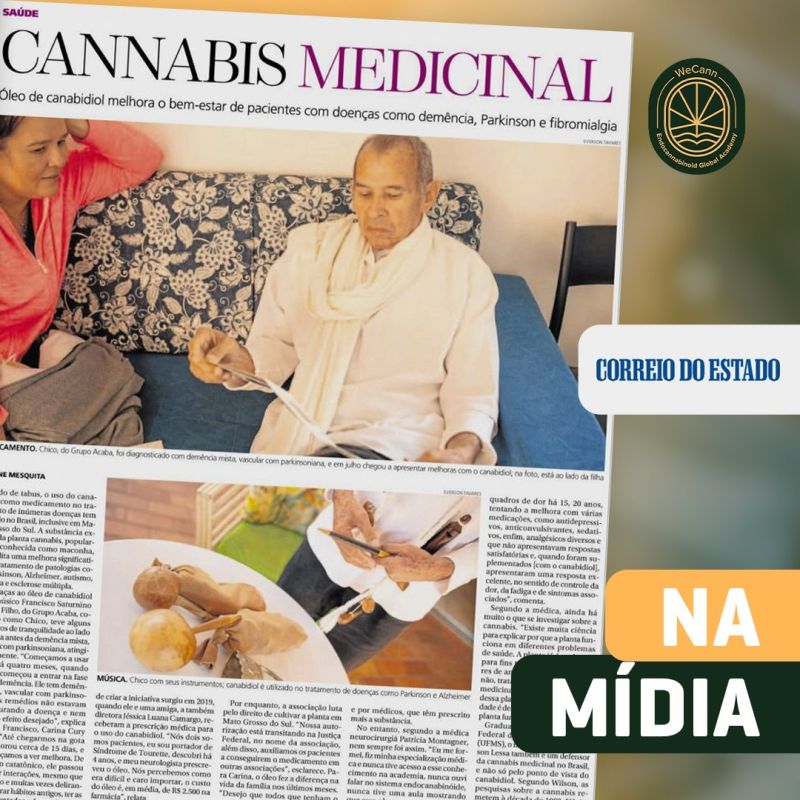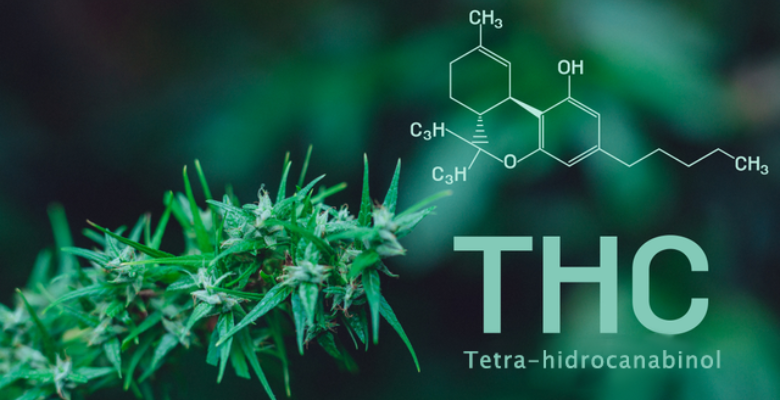According to the World Health Organization (WHO)polypharmacy is characterized by routine and concomitant use of four or more drugs by a patient – with or without prescription. The increase in life span is a factor related to the practice of polypharmacy, given the higher prevalence of chronic diseases in the elderly population.
The concomitant use of multiple drugs is associated not only with a higher incidence of side effects and complications resulting from drug interactions, but also with higher expenses associated with hospital operations and public health costs in general.
The incorporation of cannabis-based drugs into medical practice can be a valuable tool in this scenario, since it is already scientifically known that cannabinoid derivatives bring together a series of therapeutic properties capable of relieving and managing a variety of symptoms.
In this article, we are going to talk more about treatment using medical cannabis, showing why doctors need to pay attention to this therapeutic arsenal to reduce polypharmacy and enhance the patients’ quality of life.
Polypharmacy in Brazil
A research published in 2017 on the Revista de Saúde Pública of the University of São Paulo shows that polypharmacy indexes in Brazil are more frequently associated with arterial hypertension, diabetes mellitus, depression and chronic pain, and are in line with the results of other national and international studies on this subject.
According to the aforementioned study, these are prevalent conditions in the country, especially in the elderly populationwhose treatment presupposes the concomitant use of multiple drugs. The research was conducted on a total of 9,000 users of SUS primary care, covering the five Brazilian regions.
The results show that the prevalence of polypharmacy among drug product users was 9,4% in the general population and 18,1% in the elderly over 65 years. The most commonly used medicines were those related to cardiovascular system.
Other medicines were also highlighted among those most used by polypharmacy patients, such as amitriptyline, clonazepam, diazepam, fluoxetine and ibuprofen.
Interestingly, conditions often treated by those drugs — such as anxiety, sleep disorders and chronic pain may show promising responses with medical cannabis.
>>You can read the full research here: Polypharmacy: a reality in the Unified Health System primary care.
Risks and Costs Associated with Polypharmacy
Although the concomitant use of multiple drugs can represent an effective way to control and fight some diseases, the practice of polypharmacy increases the likelihood of drug interactions and the occurrence of adverse effects in patients. In addition, in many cases, the concomitant use of drugs makes hampers the compliance and effectiveness of treatments.
The elderly, for example, are more susceptible to toxicity and action of certain drugs, due to physiological changes typical of ageing, such as decreased metabolic functions and loss of muscle mass.
And it is precisely the elderly, the majority of polypharmacy patients, to face chronic conditions such as cardiovascular and pulmonary diseases, Alzheimer’s, chronic pain, among others.
Reducing polypharmacy is an important issue not only to promote the health of the population on a large scale, but also to reduce expenses related to hospital operations and public health in general.
After all, the greater the number of drugs prescribed, the greater the cost for the patient and the greater the healthcare expenses, including the treatment of conditions resulting from adverse effects associated with the use of multiple drugs.
Medical cannabis in medical practice
Scientific research shows that the Endocannabinoid System is involved in a number of functions in our body, such as appetite control, energy balance, neuroprotection, pain modulation, several inflammatory responses, and many other physiological processes.
Therefore, therapies focused on the Endocannabinoid System, especially cannabinoid derivatives can bring promising results for several clinical conditions, showing an optimistic scenario in reducing polypharmacy. And the best, results allied to low occurrence of adverse effects to patients..
Advances in studies on the therapeutic potential of cannabinoids and the recent resolutions that regulate the marketing of Cannabis-based products in Brazil and around the world are increasingly enhancing this therapy in medical practice.
Do you want to learn more about the use of cannabinoids in medical practice? Discover the wide therapeutic spectrum of medicinal Cannabis and see how medicines based on this plant can alleviate several symptoms and clinical conditions.
How Cannabis Can Reduce the Use of Medicines
Although CBD (cannabidiol) and THC (tetrahydrocannabinol) are the best-known and most researched cannabinoids among Cannabis chemovars, the plant brings together more than 550 chemicalcompounds, flavonoids and terpenes with wide therapeutic potential.
These compounds act on several groups of receptors in our body, endocannabinoid receptorsopioids, glutamatergic, GABAergic, dopaminergic, acetylcholinergic, transient receptor potential channels, nuclear receptors, among others. This confers a wide range of action of cannabinoid derivatives, in modulation of pain and inflammatory processes, mood, sleep-wake cycle, appetite and energy balance, among others.
Together, the different chemical elements of the plant act in synergy to enhance therapeutic results and reduce the occurrence of possible adverse effects. This process is called the Entourage Effect.
To better understand how the Entourage Effect occurs, visit this content and see how to optimize results using full spectrum products.
There are already studies linking the use of cannabinoid derivatives to reduction of polypharmacy, such as this research North American research published in 2021 in the Journal of Medical Cannabis and Cannabinoids. This study shows that cannabis-based therapy helped to reduce or completely discontinue drug use in 65% of patients, in the study sample.
That study evaluated 157 participants (64 men and 93 women), aged from 21 to 76 years, who used medical cannabis to treat anxiety, stress and pain. In addition to reporting important therapeutic effectiveness, when asked whether the frequency of use of conventional medications decreased during treatment with medical cannabis, 78,3% of patients reported changes in relation to consumption of OTC medicines (“(“over-the-counter”, which are non-prescription products in pharmacies, such as painkillers and various anti-inflammatory drugs).
As 17% of these patients provided incomplete information, some results could not be categorized. After excluding them from analysis, the authors’ conclusions were as follows:
- 102 patients (65%) reported reduction or total discontinuation of at least one prescription or OTC drug;
- 41 patients (26%) reported reduced consumption of at least one prescription or OTC drug;
- 72 patients (46%) reported discontinuation of of at least one prescription or OTC drug;
- 11 patients (7%) reported reduction and discontinuation of one prescription or OTC drug.
>>You can read the full research here: Demographics, Perceptions, and Use of Medical Marijuana among Patients in Florida..
Reduction in the use of opioids, benzodiazepines and antidepressants
Another example where medical cannabis has brought positive results in reducing polypharmacy is in this North-American study linking the reduction in benzodiazepines use to treatment with cannabinoids. The study was carried out on 146 patients (mean age 47 years, 61% female).
The results show that 30,1% of patients discontinued benzodiazepines after two months of using medical cannabis. After three months on prescribed medical cannabis, 66 patients in this group (45,2%) were able to completely discontinue the use of benzodiazepines.
>>You can read the full research here: Reduction of Benzodiazepine Use in Patients Prescribed Medical Cannabis.
To learn more about Cannabis and Benzodiazepines, visit this content and understand how cannabinoids help to contain the chronic use of said substances!
Even more expressive results about the impact of medical Cannabis on reducing polypharmacy refers to the use of opioids for management of chronic and oncological pain. The “opioid crisis” in the United States illustrates this scenario, considering that, over a period of 14 years, the country added more than 160 thousand deaths due to overdose from this class of drugs.
The assertive use of medical cannabis has helped to contain this alarming rate. In addition to positively acting in the relief of chronic painCBD and THC phytocannabinoids work as adjuvants in prescriptive weaning strategies in chronic users of opioids and other psychotropic drugs, commonly used in chronic pain conditions.
A research conducted in 2020 by the Society of Cannabis Clinicians in Sevastopol, United States, evaluated 525 patients who used cannabinoids in combination with opioids, which were prescribed for at least three months to treat chronic pain. The results showed that:
- 40% of patients were able to completely discontinue opioids;
- 45% of patients were able to partially reduce opioids use;
- 65% of patients were able to keep reducing opioid dosage for more than one year;
- 48% of patients were able to reduce the pain perception index from 40% to 100%
In addition to contribute in reducing opioids use, medical cannabis shows potential to reduce the use of other drugs, such as antidepressants. This is what says this research which evaluated a questionnaire with 107 questions answered by 271 users of medical cannabis.
The results indicated that the most common medical uses were to treat chronic pain and mental health conditions. Findings included the use of Cannabis as an effective substitute for different prescription drugs (63%)especially fo opioids(30%), benzodiazepines (16%) and antidepressants (12%).
>>You can read the full research here: Medical cannabis access, use, and substitution for prescription opioids and other substances: A survey of authorized medical cannabis patients.
Reduction of use in drugs associated with cancer treatment
Scientific studies indicate that medical Cannabis can help reducing polypharmacy also in the oncological context, working as a valuable adjuvan in fighting symptoms associated with cancer.
An example is this research that analyzed data routinely collected from a treatment program on 2.970 cancer patients using medical cannabis, between 2015 and 2017.
The mean age in this group of patients was 59.5 years, and 54.6% were women. The most frequent types of cancer in this evaluation were: breast (20.7%), lung (13.6%), pancreas (8.1%) and colorectal (7.9%), with 51.2% of them at stage 4.
The most common symptoms that needed treatment were: sleep disorders (78.4%), pain (77.7%, with an average intensity of 8/10), fatigue (72.7%), nausea (64.6%) and lack of appetite (48.9%).
After six months of experiment 902 patients (24,9%) died and 682 (18,8%) discontinued treatment. Of the remaining 1,211 (60.6%), 95.9% reported improvement in their clinical condition, 3,7% reported no change, and 0,3% reported worsening.
The authors concluded that medical cannabis in cancer patients under palliative care has shown to be effective, safe, and well tolerated in the management of symptoms related to tumors malignancy.
>>You can read the full research here: Prospective analysis of safety and efficacy of medical cannabis in large unselected population of cancer patients.
Reduction in health care costs
This study conducted by North American researchers also showed that the legalization of medical cannabis in the country can also contribute to reducing health care costs.
The analysis included data from all prescriptions of patients enrolled in Medicare Part D from 2010 to 2013. Medicare Part D is a US federal government program that helps beneficiaries to pay for prescription drugs.
This research results estimate that Medicare prescription-related costs dropped by $165.2 million in 2013, considering the use of cannabis as therapeutic alternative to a range of conventional drugs.
>> You can read the full study here: Medical Marijuana Laws Reduce Prescription Medication Use In Medicare Part D.
Advantages of Deprescription
The Deprescription is one of the most used strategies to reduce polypharmacy and, consequently, the risks associated with this practice. It is the process of identifying and discontinuing the use of unnecessary, ineffective, unsafe, or potentially inappropriate drugs for patients.
The Deprescription requires a close doctor-patient relationship to assess the cost-benefit involved in each medication, that is, how much the patient can really benefit from that medication so that it is actually advantageous to resort to polypharmacy.
This study North American study published in 2018 in the Support Care Cancer scientific journal shows how 73% of drugs identified as potentially inappropriate were deprescribed and better therapeutic results were achieved.
The research was conducted on 26 elderly cancer patients, who used an average of 12 drugs daily.
The researchers assessed polypharmacy based on the Beers Criteria and three other screening tools.The Beers Criteria consists of a list of drugs that are considered inappropriate and/or unsafe for the elderly.
In general, this group includes drugs that require attention regarding interactions with other substances, drugs that should be avoided in specific contexts, and drugs that need to have the dosage adjusted according to patient’s renal function.
According to the Beers Criteria, 38 potentially inappropriate drugs were identified in said study. The other tools identified 119 potentially inappropriate drugs.
This means an average of 5 potentially inappropriate drugs per patient.
After this evaluation, 73% of these drugs were deprescribed, resulting in an average of 3 deprescribed drugs per patient.
About two-thirds of patients reported a reduction in symptoms with deprescription alone.The results also showed that, regarding health expenses, there was an average reduction of 4,282.27 dollars per patient, considering the period of data collection for the research, which ranged from August 2015 to April 2016.
>>You can read the full research here: Pharmacist-led medication assessment and deprescribing intervention for older adults with cancer and polypharmacy: a pilot study.
Why do doctors need to be up-to-date on cannabis-based treatment?
Scientific evidences surrounding the therapeutic properties of Cannabis has been driving a paradigm shift about the medical use of this plant. Currently, PubMed gathers thousands of articles on this subject, showing promising results involving cannabis-based treatments.
There is already scientific evidence pointing to positive results for several diseases, ranging from chronic pain to psychiatric disorders. The more research evolves, the more the medical community realizes the need to get ready for this scenario.
As we have seen, it is possible to reduce polypharmacy by means of cannabis-based therapies. However, it is important to emphasize that, in order to safely and assertively incorporate Medical Cannabis into their prescriptive practice, physicians need technically qualified education in this field.
The WeCann Academy helps you get ready for this scenario. We connect national and international references in a global community of studies and research on Endocannabinoid Medicine, to bring together scientific knowledge and practical experience in this field.
Do you want to join our community? Contact us and learn more about it!
References
Bar-Lev Schleider L, Mechoulam R, Lederman V, Hilou M, Lencovsky O, Betzalel O, Shbiro L, Novack V. Prospective analysis of safety and efficacy of medical cannabis in large unselected population of patients with cancer. Eur J Intern Med. 2018.
Bradford AC, Bradford WD. Medical Marijuana Laws Reduce Prescription Medication Use In Medicare Part D. Health Aff (Millwood). 2016.
Lucas P, Walsh Z. Medical cannabis access, use, and substitution for prescription opioids and other substances: A survey of authorized medical cannabis patients. Int J Drug Policy. 2017.
Nascimento RC, et. al. Polypharmacy: a reality in the Unified Health System primary care. Rev. Saúde Pública vol. 51 (Sup. 2) São Paulo. 2017.
Purcell C, Davis A, Moolman N, Taylor SM. Reduction of Benzodiazepine Use in Patients Prescribed Medical Cannabis. Cannabis Cannabinoid Res. 2019
Rosenthal MS, Pipitone RN. Demographics, Perceptions, and Use of Medical Marijuana among Patients in Florida.. Med Cannabis Cannabinoids. 2020.
Whitman A, DeGregory K, Morris A, Mohile S, Ramsdale E. Pharmacist-led medication assessment and deprescribing intervention for older adults with cancer and polypharmacy: a pilot study. Support Care Cancer. 2018.




